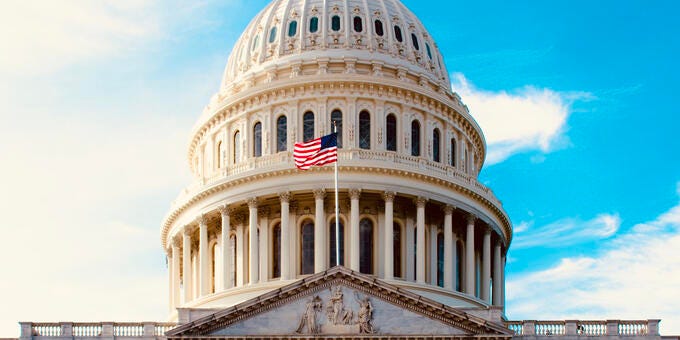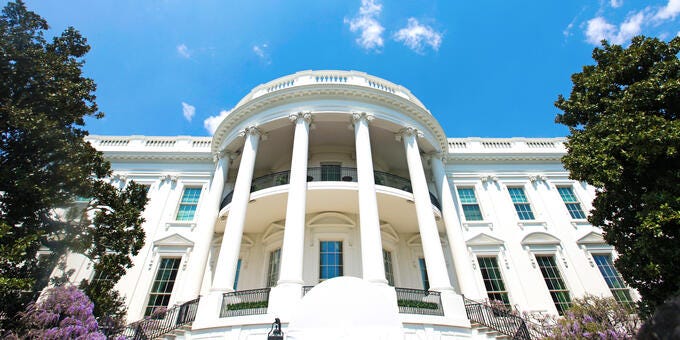
Breaking Down the Real Estate Provisions in the One Big Beautiful Bill Act
- Published
- May 30, 2025
- Topics
- Share
On May 22, 2025, the U.S. House of Representatives passed H.R.1 – the One Big Beautiful Bill Act (House Bill). Below is a summary of key real estate related provisions, including a brief description of current law and how that would be altered under the House Bill. However, as the House Bill moves to the U.S. Senate, the provisions discussed below may be altered, removed entirely, or new provisions and policies not included in the House Bill added.
Extension of the IRC Sec. 199A Qualified Business Income (QBI) Deduction and Permanent Enhancement
Under current law, the 20% QBI deduction is set to expire for taxable years beginning after December 31, 2025, and Specified Service Trades or Business (SSTBs) are generally excluded above certain income thresholds.
The House Bill makes the deduction for certain pass-through income under IRC Sec. 199A permanent and increases the deduction rate from 20% to 23%. The House Bill also replaces the current phase-out rules for W-2 wages, capital investment, and SSTB limitations with a new two-step framework for taxpayers with taxable income above the threshold. Under this new approach, the IRC Sec. 199A deduction is limited to the greater of: (1) the W-2 wage and capital investment limitation applied to qualified trades or businesses (generally excluding SSTBs), or (2) 23% of income from all qualified trades or businesses (generally including SSTBs), reduced by 75% of the excess of taxable income over the threshold amount. This structure introduces a somewhat more gradual and extended phaseout compared to the current law, easing the sharp cutoff effect and potentially allowing more taxpayers, especially those just above the income threshold, to benefit from the deduction.
The deduction also extends to certain interest dividends of qualified business development companies, effective for tax years beginning after December 31, 2025.
Extension of Limitation on Deduction for Qualified Residence Interest
The Tax Cuts and Jobs Act (TCJA) temporarily suspended the deduction for home equity interest indebtedness and temporarily reduced the acquisition indebtedness threshold on indebtedness acquired after December 15, 2017, from $1,000,000 ($500,000 MFS) to $750,000 ($375,000 MFS). These limitations were set to expire at the end of 2025. The House Bill makes these reductions permanent.
Termination of Miscellaneous Itemized Deductions
Prior to the enactment of the TCJA, certain Miscellaneous Itemized Deductions were allowed as a deduction against taxable income to the extent they exceeded 2% of a taxpayer’s adjusted taxable income. The TCJA made these deductions non-deductible for certain taxpayers for taxable years beginning after December 31, 2017, and before January 1, 2026. The House Bill would make these expenses permanently non-deductible.
Taxpayers with activities that otherwise generate significant 2% portfolio deductions (e.g. real estate debt funds not treated as engaged in a trade or business) may want to consider the impact this provision and the permanent non-deductibility of an entire ‘class’ of expenses may have on their after-tax returns, and structure their activities and assets so as to minimize the creation of 2% portfolio deductions (e.g. by potentially utilizing REIT or subsidiary REIT structures where possible).
Extension of 100% Bonus Depreciation and Special Depreciation Allowance for Qualified Production Property
Under current law, bonus depreciation began phasing out after 2022 (reduced by 20% per year between 2023 and 2026) and is scheduled to sunset entirely after 2026. In general, the House Bill provides for 100% bonus depreciation for qualified property (definition unchanged by the House Bill) acquired and placed in service after January 19, 2025, and before January 1, 2030, after which time bonus depreciation is scheduled to return to zero.
The House Bill effectively extends the TCJA's ‘cliff’ on bonus depreciation under IRC Sec. 168(k) from January 1, 2027, until January 1, 2030, and increases the bonus depreciation rate during this extension period back up to full 100%.
In addition, the House Bill would create IRC Sec. 168(n), allowing 100% depreciation for nonresidential real property that qualifies as qualified production property (QPP), for the taxable year in which such property is placed in service. For purposes of this provision, QPP is property that is:
- Used by the taxpayer as an integral part of a qualified production activity,
- Placed in service in the U.S. or any possession of the U.S.,
- Construction of which begins between January 20, 2025, and December 31, 2028, and
- Which is placed in service before January 1, 2033.
QPP is subject to IRC Sec. 1245 recapture if, at any time during the 10-year period beginning on the date that it was placed in service by the taxpayer, it ceases to be used as an integral part of a qualified production activity.
Importantly, QPP specifically excludes any non-residential real property used for offices, administrative services, lodging, parking, sales activities, research activities, software engineering activities, or other functions unrelated to manufacturing, producing, or refining tangible personal property.
Finally, a qualified production activity is defined to include the manufacturing, production, or refining of tangible personal property, but only if the activities result in a substantial transformation of the property.
Reinstatement of Depreciation, Amortization, and Depletion Add-Back for IRC Sec. 163(j)
The TCJA amended IRC Sec. 163(j), which, in broad terms, limited a subjected taxpayer’s deduction for business interest expense to the combination of:
- 30% of the taxpayer’s Adjusted Taxable Income (ATI), and
- the taxpayer’s excess business interest income.
ATI is calculated by adjusting the taxpayer’s taxable income and/or loss by adding or subtracting certain enumerated items. For taxable years beginning before January 1, 2022, taxpayers were able to add back depreciation, amortization, and depletion in determining ATI (thus increasing the 30% limitation against which deductible business interest expense is measured).
The House Bill reinstates the depreciation, amortization, and depletion add-back to taxable income when computing a taxpayer’s ATI for tax years beginning after December 31, 2024, and before January 1, 2030.
For taxpayers with depreciation, amortization, or depletion, this increases the taxpayer’s ATI and the amount of business interest expense the taxpayer may be able to deduct without limitation under IRC Sec. 163(j). This increased business interest expense limitation may be relevant for real estate activities that are weighing the cost vs. benefit of an IRC Sec. 163(j)(7)(A)(ii) Electing Real Property Trade or Business Election. Such an election may no longer be necessary or beneficial given the potentially larger prospective ATI threshold.
Increased IRC Sec. 179 Expensing Limits
The House Bill raises the expensing limit under IRC Sec. 179 from $1.0 million to $2.5 million and the phase-out threshold from $2.5 million to $4.0 million, both of which will be indexed for inflation starting in 2026.
(Note: Many states conform to the federal IRC Sec. 179 provisions but not to bonus depreciation.)
Increase in SALT Deduction Cap
Under current law, the TCJA capped the State and Local Tax (SALT) deduction for individuals at $10,000 ($5,000 for MFS) through 2025. This provision is currently set to expire on December 31, 2025, at which point the cap noted above would be inapplicable.
The House Bill increases the SALT deduction limitation to $40,000 ($20,000 MFS) for the 2025 taxable year. The deduction begins to phase out once a taxpayer’s AGI exceeds $500,000 ($250,000 MFS). The deduction is reduced by 30% of the amount by which the taxpayer’s AGI exceeds the applicable limit, but cannot go below $10,000 ($5,000 MFS). The $40,000 annual deduction cap and AGI threshold amounts will increase by 1% each year starting in 2026 until 2033, at which point it will freeze at the 2033 level.
Limitations on SALT Pass-Through Entity Tax Workarounds
In reaction to the TCJA, many states created elective pass-through entity-level income taxes to allow these entities to pay and deduct state and local taxes. This effectively allows owners of pass-through entities (PTE) to circumvent the SALT cap. The IRS indicated it would allow these workarounds in Notice 2020-75.
The House Bill restricts the use of the SALT pass-through entity tax workarounds (PTET) to only partnerships and S corps eligible for the IRC Sec. 199A QBI deduction starting in 2026.
Specifically, SALT PTET payments are only deductible at the entity level if they are paid by a qualifying entity (i.e., at least 75% of IRC Sec. 448(c) gross receipts are derived in an IRC Sec. 199A(d) qualified trade or business) with respect to carrying on an IRC Sec. 199A(d) qualified trade or business. Thus, activities of SSTBs (which generally includes health, law, accounting, actuarial science, performing arts, consulting, athletics, brokerage services, investing and investment management, trading, or dealing in securities) would no longer be deductible by the entity.
Permanent Limitation on Excess Business Losses
Under current law, the Excess Business Loss (EBL) limitation under IRC Sec. 461(l) applies to non-corporate taxpayers and is scheduled to expire after 2028. In addition, EBL losses become part of a taxpayer’s Net Operating Loss (NOL) and can be credited against other types of income in the year following the EBL limitation.
The House Bill makes the IRC Sec. 461(l) EBL limitation for noncorporate taxpayers permanent. Starting in 2025, disallowed losses will no longer convert to NOLs but instead remain subject to IRC Sec. 461(l). These losses will only be able to offset trade or business income in future years.
REIT Taxable REIT Subsidiary (TRS) Asset Test
Under current law, the TRS asset limit was reduced from 25% to 20%, effective for tax years beginning after 2017. The House Bill restores the prior 25% threshold, providing REITs with expanded flexibility in structuring service-oriented or taxable operations.
The House Bill amends IRC Sec. 856(c)(4)(B)(ii) to increase the percentage of a REIT's total asset value that may be represented by TRS securities to 25%.
Exclusion of Interest on Loans Secured by Rural or Agricultural Real Property
The House Bill would create IRC Sec. 139K, which would exclude up to 25% of the interest received by a “qualified lender” on any “qualified real estate loan.” The legislation defines such a loan as any loan secured by rural or agricultural real estate or a leasehold mortgage on rural or agricultural real estate. The property will be considered “rural or agricultural real estate” if it is used:
- For the production of one or more agricultural products,
- In the trade or business of fishing or seafood processing, or
- As an aquaculture facility.
The provision would be effective for taxable years ending after the date the legislation was enacted and before January 1, 2029.
Energy Credit Changes
The following clean energy credits would expire after December 31, 2025, with limited exceptions for properties under construction or contracts in place before key deadlines:
- Energy Efficient Home Improvement Credit (IRC Sec. 25C) - Credit for upgrades to existing homes (e.g., insulation, windows, HVAC systems).
- Residential Clean Energy Credit (IRC Sec. 25D) - Credit for solar panels, battery storage, and other residential clean energy systems.
- New Energy Efficient Home Credit (IRC Sec. 45L) - Incentive for homebuilders and developers constructing energy-efficient single-family and multifamily housing.
- Alternative Fuel Refueling Property Credit (IRC Sec. 30C) - Credit for installing EV charging stations, highly relevant for commercial, multifamily, and retail property owners.
Low-Income Housing Tax Credit
The final version of the House Bill includes four low-income housing tax credit (LIHTC) provisions, effective for taxable years 2026-2029:
- A reduction in the 50% financed-by test for housing financed by private activity bonds,
- A restoration of the 12.5% increase in 9% LIHTC allocations that had expired in 2021,
- An up to 30% basis boost for properties in rural areas, and
- An up to 30% basis boost for properties in tribal communities.
Extension and Modification of the Qualified Opportunity Zone (QOZ) Program
The House Bill launches a second round of the program from 2027 to 2033, featuring:
- Narrower definition of low-income communities, including a new requirement that at least 33% of zones be in rural areas,
- Replacement of 10% and 5% basis step-ups with one 10% basis step-up,
- Enhanced tax benefits for investments via "qualified rural opportunity funds" (e.g., 30% step-up in basis if held for five years),
- Eligibility of ordinary income to qualify under the deferral election, however, subject to a $10,000 lifetime limit per taxpayer, and also not eligible for a basis step-up, and
- Additional reporting requirements at the QOZ fund and business levels.
As noted, the Senate is expected to modify the House Bill, which could include changes to any of the provisions discussed above. Contact us below if you have questions about how the proposed legislative changes could impact you.
What's on Your Mind?
Start a conversation with the team
_original%20file.png)












